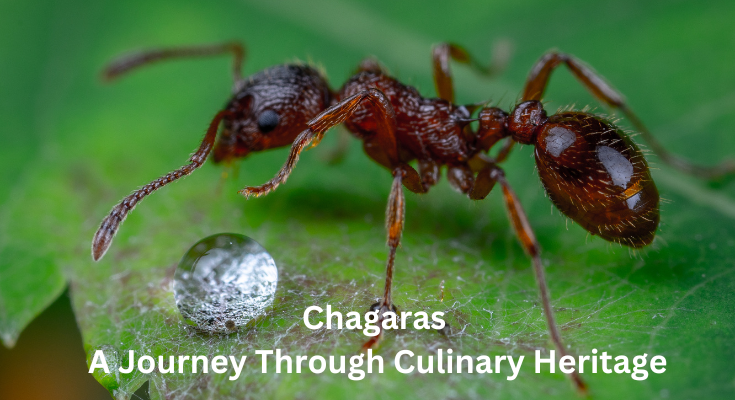Chagaras A Journey Through Culinary Heritage
Chagaras, an exquisite delicacy rooted in tradition, carry a rich heritage and cultural significance that transcends borders and generations. From their humble origins to their modern-day adaptations, chagaras remain a symbol of culinary artistry and cultural exchange. In this article, we delve into the intriguing world of these, exploring their history, cultural significance, health benefits, and culinary versatility.

What are Chagaras?
They are a type of savory pastry enjoyed primarily in various cultures, particularly in the Mediterranean and Middle Eastern regions. These delectable treats are renowned for their crispy exterior and soft interior, often filled with a mixture of meats, vegetables, and spices. They are celebrated for their unique flavor profile, which balances savory, spicy, and aromatic elements.
The Origins of Chagaras
The origins of chagaras can be traced back to ancient times. It is believed that these pastries were first created by nomadic tribes who needed portable and long-lasting food items. Over the centuries, they evolved and diversified, with each culture adding its unique twist to the traditional recipe. Historical anecdotes suggest that these were often prepared during festive occasions and community gatherings, symbolizing unity and celebration.
The Cultural Significance of Chagaras
Rituals and Traditions: It hold a special place in various cultural ceremonies and celebrations. During festivals and holidays, these are prepared and shared among family and friends as a symbol of prosperity and togetherness. They are often featured in wedding feasts, religious festivals, and community gatherings, embodying the spirit of hospitality and generosity.
Symbolism in Chagaras: In many cultures, these are imbued with symbolism. Their intricate shapes and designs often carry meanings related to prosperity, good luck, and protection. For instance, the circular shape of some chagaras represents the cyclical nature of life and the eternal bond of community.
How to Make Chagaras
Ingredients and Preparation: To make chagaras, you will need the following ingredients:
- Flour
- Water
- Olive oil
- Ground meat (such as lamb or beef)
- Chopped vegetables (such as onions, spinach, or potatoes)
- Spices (such as cumin, coriander, and paprika)
- Salt and pepper
Step-by-Step Instructions:
- Prepare the Dough: Combine flour, water, and olive oil to form a smooth, elastic dough. Knead the dough thoroughly and let it rest for at least 30 minutes.
- Prepare the Filling: In a pan, cook the ground meat with chopped vegetables and spices until fully cooked. Allow the mixture to cool slightly.
- Shape the Chagaras: Roll out the dough into thin circles. Place a spoonful of the filling in the center of each circle and fold the dough over, sealing the edges to form a half-moon shape.
- Cook the Chagaras: Fry it in hot oil until golden brown and crispy. Alternatively, you can bake them in a preheated oven at 375°F (190°C) for about 20 minutes or until golden.
Health Benefits of Chagaras
Chagaras are not only a delight for the taste buds but also offer several health benefits. Rich in protein, vitamins, and minerals, they can contribute to a balanced diet. The use of vegetables and spices in the filling provides essential nutrients and antioxidants, while the olive oil in the dough offers healthy fats that promote heart health.
Chagaras in Different Cuisines Around the World
While it may have originated in the Mediterranean and Middle Eastern regions, they have found their way into cuisines around the world. In countries like Greece, Turkey, and Lebanon, these are prepared and enjoyed in various forms, each with its unique flavors and ingredients.
Chagaras: Myths vs. Facts
There are several myths and misconceptions surrounding chagaras. One common myth is that they are always unhealthy due to being fried. However, baking it is a healthier alternative that retains their deliciousness. Another misconception is that chagaras are difficult to make, but with the right recipe and techniques, they can be easily prepared at home.
Also Read: Igaony Your Ultimate Guide to an Unforgettable Adventure
Sustainability and Environmental Impact of Chagaras Production
As the demand for it continues to grow, it is essential to consider their environmental impact. Efforts are being made to promote sustainable practices in the production of it, such as using locally sourced ingredients and minimizing food waste. By adopting these practices, the ecological footprint of its production can be reduced.
FAQs About Chagaras
Are chagaras gluten-free? While traditional these are typically made with wheat flour, there are gluten-free alternatives available for those with dietary restrictions.
Can I freeze chagaras for later consumption? Yes, it can be frozen and reheated later. Make sure to store them in an airtight container to maintain freshness.
Are there any vegan-friendly chagaras recipes? Absolutely! There are plenty of vegan chagara recipes available, using plant-based ingredients for both the dough and filling.
What is the best way to serve chagaras? It can be served hot or cold, depending on personal preference. They pair well with a variety of condiments and sauces, making them versatile for any meal.
How long do chagaras stay fresh? When stored properly in an airtight container or wrapped tightly in plastic wrap, it can stay fresh for up to three to four days.
Conclusion
Chagaras stand as a testament to the enduring legacy of culinary craftsmanship and cultural heritage. From their humble beginnings to their global prominence, it continue to captivate the senses and unite people from all walks of life in appreciation of good food and shared traditions. Whether enjoyed during festive celebrations or as a daily treat, these are a culinary delight that transcends borders and generations.
